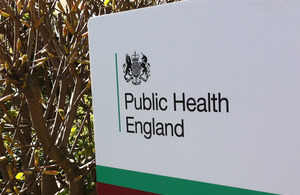Town planning and public health: shared competencies
How the Public Health Skills and Knowledge Framework can be used to review skills in planning healthier places and communities.

The determinants of people’s health and wellbeing are complex, including their genetics, access to and quality of health care. Mostly, they are due to the wider socio-economic and environmental determinants in which they live, work and play. Much of the systems, policies and investment actions determining the way the environment is planned, designed, used and managed are the responsibility of town planners and the statutory planning system.
Therefore, addressing these wider determinants requires not only the actions of public health professionals but also town planners working in public and private sectors, including local authorities. These actions are determined by regulatory and policy directives from the Department for Levelling Up, Housing and Communities (DLUHC), primarily through the National Planning Policy Framework (NPPF). The NPPF sets out planning’s role to promote healthy and safe communities by meeting local health needs and supporting delivery of health strategies, and which can be achieved by making the use of tools such as health impact assessments (HIAs). There is a need to demonstrate what competencies town planners need and how they may already be aligning with the Public Health Skills and Knowledge Framework (PHSKF).
The solution
Town planners are required to meet certain competencies to qualify chartered membership of the Royal Town Planning Institute as the membership body responsible for maintaining professional standards. Though there are several routes to chartership, generally, all practitioners are required to use case studies to reflect on specified competencies for awareness, understanding and application, as part of a membership assessment. The competencies include:
- identifying and analysing issues
- gathering appropriate information
- identifying and assessing alternative courses of action
- initiating and implementing a course of action or dissemination of knowledge
- legal framework and politics in planning
- reflection and review
Certain comparable PHSKF competencies are utilised, for example by a local authority planning policy planner to gather local intelligence such as the health needs assessment as part of an HIA health impact assessment (HIA) and wider evidence base to support lead policy areas such as on healthy places. Based on Public Health England’s HIA in Planning guide, professionals can be expected to demonstrate relevant competencies including:
- PHSKF A1.5: collate and analyse data to produce intelligence that informs decision making, planning, implementation, performance monitoring and evaluation – this is relevant for devising strategy/briefs to identify, collate and analyse local health needs and other data to justify requirement for HIAs in planning applications
- PHSKF A2.2: advocate public health principles and action to protect and improve health and wellbeing – town planners demonstrate this competency when integrating wider determinants issues into a policy or justification text of a policy
- PHKSF A3.5: mitigate risks to the public’s health using different approaches such as legislation, licensing, policy, education, fiscal measures – town planners will explore different planning powers available to local authorities including the HIA to tackle unhealthy environments
- PHSKF A4.4: report and advise on the implications of the evidence base for the most effective practice and the delivery of value for money – part of the HIA is to recommend options and preferred policy and wording options based on the evidence collated
- PHSKF B4.2: operate within the decision making, administrative and reporting processes that support political and democratic systems – this was identified as a common competency as town planners will need to understand the local political context and direction underpinning the policy action
- PHSKF C2.3: facilitate dialogue with groups and communities to improve health literacy and reduce inequalities using a range of tools and technologies – town planners will need to engage groups and gain consensus during the period of evidence gathering and advisory support
A high-level mapping exercise was conducted to determine whether town planners’ competencies for the above example align with those of a public health professional as set out in the PHSKF. Although the competencies may be presented differently using respective jargon and terminology, the result shows alignment across all the competencies.
The outcome
Aligning competencies, using the PHSKF as the basis, opens up conversations with planners about their role and contribution to improving population health and wellbeing. Utilising specific tools available to planners in the planning system, such as HIAs, can help achieve local public health priorities. This is particularly relevant as the Prevention Green Paper seeks to improve the coverage of HIAs in non-health settings.
The future
The development of publications by the OHID Healthy Places team and the Planning and Health programme has aimed to support getting public health research and evidence into planning practice, including the HIA in Planning guide. By demonstrating that town planning and public health professionals share similar competencies, there is the opportunity for actions on wider determinants to be mainstreamed into non-health systems, such as town planning.
Contact
The OHID Healthy Places team includes programmes on spatial planning, housing, transport, natural environment and nationally significant infrastructure projects. The team promotes collaborative working and knowledge-sharing and, as such, is willing to share detailed information of resources it has developed to support others.
You can contact the PHSKF programme team via [email protected] for contact details.